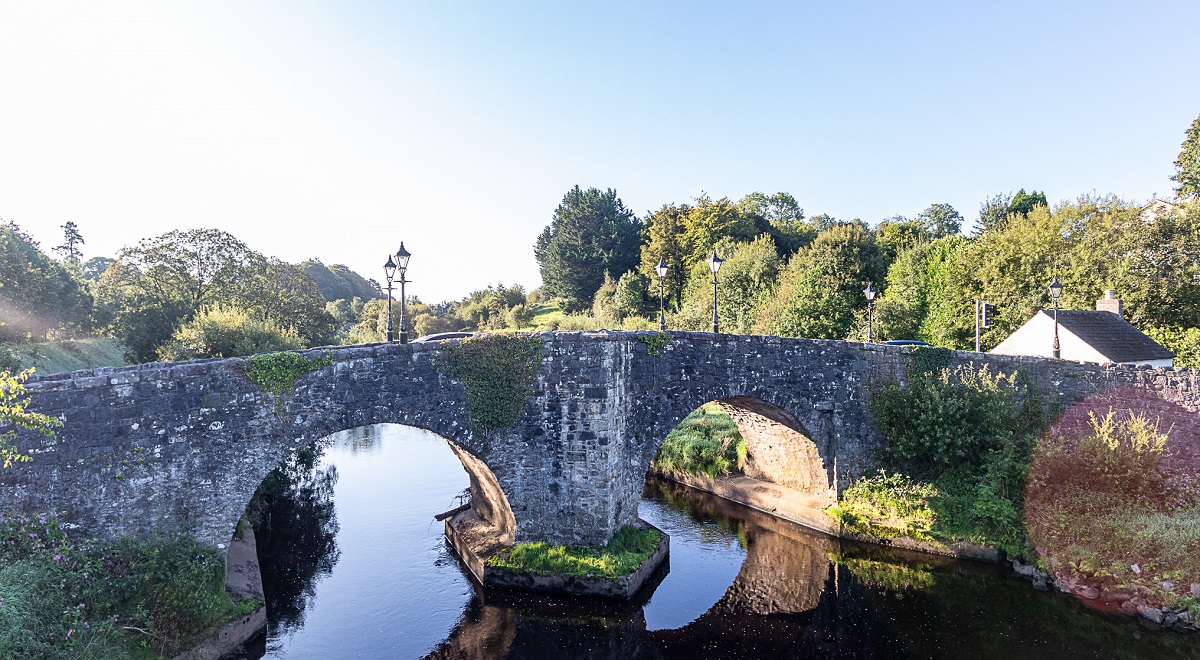For a short period of Omagh’s history, there was only one way into the town – and you had to pay a fee!
Can you imagine coming along, late for work, and being stopped at a toll point where you are forced to cough up some spare change just to get by?
This historical method of tax collection at King James Bridge may be long gone, but locals and visitors to Omagh 300 years ago were not so lucky.
Situated over the Drumragh River beside the Campsie Playing Fields, the crossing point is the oldest standing bridge into Omagh.
Though unclear when it was initially built, the site was first recorded as being ‘a simple wooden structure’ in the late 1600s.
The bridge is most famously known for King James II crossing it with his army of Jacobites as he made way his north for the famous battle against King William of Orange at the siege of Derry in 1690.
King James’ short passing through the town ensured that his name would be forever associated with the small bridge, although this wasn’t made official until the early 20th century.
It is believed that the bridge remained as a wooden structure until it was develped into a stone crossing point in the late 1700s.
This helped it survive the great fire of Omagh in 1742, which destroyed a vast majority of the town’s historical relics.
The bridge consists of several interesting features in its composure. Observant individuals will notice that the road widens before narrowing on the bridge, and there is historical reasoning for this.
In the days of yore, people would park their horse and cart before crossing the river to not only allow traffic from the other side to pass, but also to take a short break before continuing their journey into the town.
On the other side of the bridge, behind the Dunnes’ carpark, stands the toll house.

It’s a small cottage-type building, painted green and white to ‘fit in’ in with the large field behind, and, at one time, it housed chickens.
The rustic cottage was used to collect the toll fees from carts passing into the town, and housed the toll keeper.
When the new Campsie bridge was constructed in 1836, Omagh, then, had two toll bridges.
This resulted in the roundabout outside the Omagh High School being known as a ‘swinging bars roundabout’, due to the bars which stopped vehicles at the tolls. By 1858, with advances in methods of travel such as rail, these toll houses became obsolete and across Ireland, they were all abolished.
For Omagh, however, this would not be the end of the house, as it was re-purposed as a family home right up until the late 20th century.
Ken Collins, a member of the Omagh Heritage Goup, recalls the last inhabitants of the toll house: A man and his mother who maintained the property.
They also kept ‘look out’ for local contractor, JC White, who was keen to know if any of his staff were late for work.
Mr Collins said, “I remember the occupants of the toll house in 1947, a man named Galbraith who lived there with his mother.
“Anytime JC was away for a few days, Galbraith was always out at his half door at 8.30am, casually noting if the workmen and apprentices (myself included) were coming into work on time!”
Today, the toll house lays unoccupied, but remains a fascinating link to days gone by in Omagh town.
In recent history, the landmark historical site faced a threat of demolishment from 1970 until the early 1990s due to congestion issues and pedestrian safety concerns.
However, in 1993, local councillors instilled new features over a 12-week-period to improve the road operations of the bridge.
As part of the upgrades, new walls were built using stone from a railway bridge that had been demolished, along with a new deck to support traffic and indents to allow pedestrians to stand in as traffic passed.
Nearly 20 years later, it was proposed that a footbridge should be built alongside the historic bridge, again, in concern of pedestrian safety, with increased traffic and schoolchildren crossing the area.
An investment of £500,000 was utilised to create a new, safer foot and cycle bridge, which was completed in 2012.
Today, King James’ Bridge still stands over the Drumragh River, where it has been located for the last 300 years.
It may be small in structure, but the bridge is significant in terms of Omagh’s history – and at least we don’t have to pay to cross it anymore!







